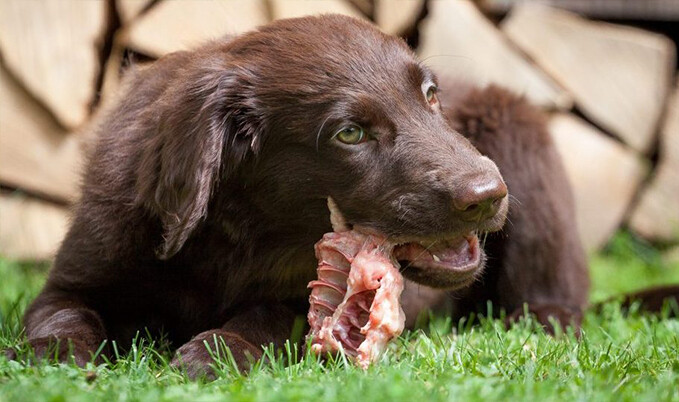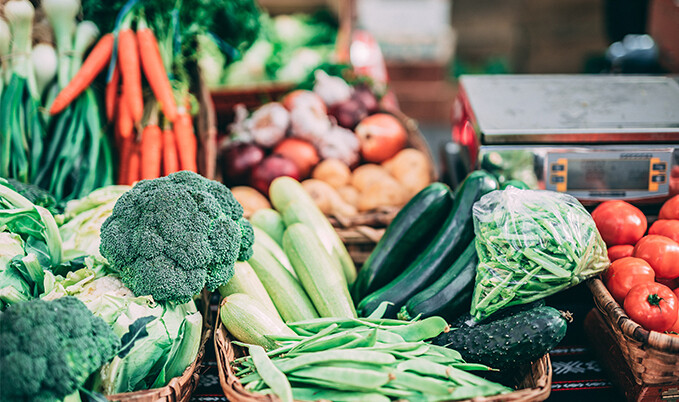Stefs Raw Feeding Guide
Starting out
When transitioning your dog onto raw, regardless of their age, we would advise starting slowly. It’s very important to prepare your dog’s gut for the transition onto a fresh, raw diet.
Probiotics are fantastic for gut health and for getting your dog’s stomach ready to transition from a processed/kibble based diet to a fresh, raw diet. Specifically, Kefir is a great probiotic and contains lots of lovely healthy bacteria to set your dog up well.
These healthy bacteria also need feeding so it’s a good idea to add in some fresh fruit & veggies too (organic if possible).
You can add some of the following things in very small amounts (1-2tbsp in total, and feed a range of the different colours):
Asparagus, courgette, cabbage (red or white), red pepper, broccoli, artichoke, okra, cauliflower, kale, dandelion leaves, pumpkin, butternut squash, raspberries, apple, blueberries, blackberries, pomegranate, guava, banana, mango, pear, orange & pineapple.
Feed these chopped, steamed or blended together in a food processor. Now add 1-2 tbsp to your dogs normal dinner for 1 week before starting your raw journey. This means you can get started while you wait for the food to arrive. Once your food arrives carry this process on for at least the first month.
There’s two ways to transition, cold turkey. A straight switch starting off In the morning with raw and no mixing. The other way is too slowly transition over 10 days. Mixing 1/10th raw to 9/10th’s kibble (or normal food). We take each individual pet and work out what’s best for them. After all you know them best.
Week 1: white meat and bone
Make sure you defrost your raw food in the fridge, my top tips would be to leave it out of the side for 1/2 hour before serving so it reaches room temperature.
At this stage we recommend Betsy Offal Free Chicken or Naturaw Mild Chicken. (more options)
This is one of the easier mixes as it’s already 90% meat and 10% bone.
White meat options include chicken, rabbit, quail, turkey etc. These can be difficult to balance at the start if you’re not using our recommended product, although this might be necessary if your dog has allergies. Introducing your dog to raw white meat proteins will be easiest on their digestive tract.
This should be timed with kefir or Alexander Natural Kefir Pawz. Include 1 tablespoon per 10kg (ish). Also include the veggies mentioned above.
Another great addition for the cupboard is River & Wren's Botanical Digestive Topper can be added during the transition, but also great for those thing there is a digestive upset.
Once your dog is having consistently firm stools for one week, move onto week 2.
NOTE WE ARE NOT INCLUDING OFFAL AT THIS STAGE.
Week 2: Tripe with white meat and bone
At this stage we recommend TDB Starter Minced Ox Tripe with Chicken.
This product is again 90% meat and 10% bone, no offal.
Continue with kefir and veggies this week too. Stools should be formed, and not loose.
Week 3: Tripe with white meat and bone
At this stage we recommend TDB Starter Mince Ox Tripe with Duck or Mersey Duck 90/10
This product is again 90% meat and 10% bone, no offal.
Continue with kefir and veggies this week too. Stools should be formed, and not loose, if loose use River & Wren's Botanical Digestive Blend.
Week 4: White meat, bone and 5% liver
In week 4, we recommend TDB Chicken 80-10-10 1kg.
This product is 85% meat, 10% bone and 5% liver. White meat is the easiest to digest and this product is great because it only contains 5% liver. Organ meat is rich and can cause diarrhoea which is why we only advise introducing 5% at this stage.
If your dog’s stool is loose and dark, reduce the amount of liver until it stabilises, then slowly work back up. You may find you need to temporarily increase the amount of daily bone content. Some dogs handle the addition of organs very well, others take time!
Continue with kefir and veggies at this stage too.
Week 5: Introducing red meat
By week 5, we have introduced a couple of white meat proteins and tripe, and offal. However, a raw diet requires variation and red meat has nutrients that just aren’t found in white meat.
Here are some examples of what you could introduce at this stage:
TDB Ox Mince with Chicken 80-10-10 1KG and TDB Ox Mince with Duck 80-10-10 1KG
Once your dog is having consistently firm stools with the addition of a red meat, continue to increase variation and proteins.
At this stage you will be feeding 80-10-10. Just like last week, decrease the amount of second secreting organ if your dog’s stool loosens (or becomes explosive), then slowly work back up. Once your dog is having consistently firm stools (dark, firm stools are okay), then continue on.
At this point, you’re probably a Certified Poop Inspector. Congratulations! Keep up the good work. You know what to do – if something in this step triggered a bout of loose stool, dial it back. Feed a little less organ, or add a smaller amount of that second red meat.
How much should you feed?
Puppies
These guidelines are for puppies up to an age of approximately 9-12 months. For large breed puppies, they can be used up to 24 months.
Because young dogs are constantly growing, they need a higher percentage of food than adult dogs. The easiest way to work out how much to feed your puppy is to feed a percentage of its body weight.
As a guideline, we’d suggest:
| Age | Percentage (per day) |
|---|---|
| 8-12 weeks
12-16 weeks 16-24 weeks 24-32 weeks 32+ weeks 36 + weeks | 10-8%
8-6% 6-5% 5% 4% 3-4% |
These percentages are a guide. It’s important to regularly weigh your puppy and keep a record of their weight so you can increase/decrease their food as and when necessary.
Adult dogs
As a general rule, adult dogs should be fed around 2-4% of their ideal adult weight depending on activity levels.
Senior dogs
For senior dogs, we’d recommend feeding approximately 1-3% of their ideal adult weight.
Sign up to our Facebook groups for more advice and handy tips!
We’re always looking out for the latest research and advice around feeding a fresh, raw diet, and we always ensure you’re the first to know when we find new research. We highly recommend you make use of the many resources available to help you start your journey into fresh feeding.
Check out our Stefs Pet Pantry Facebook Page where Stef frequently posts handy tips and advice on how to feed a fresh diet.
We also have a fantastic Stefs Pet Pantry Customers Facebook Group where you can chat to other customers and find out more about how other people are feeding a fresh diet. We’re all learning together!


